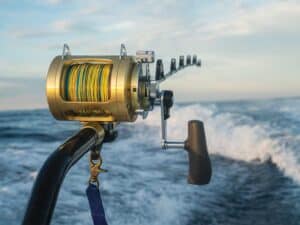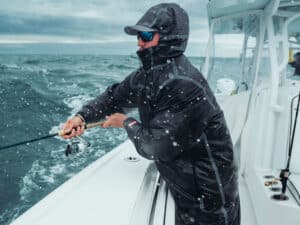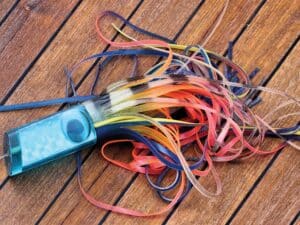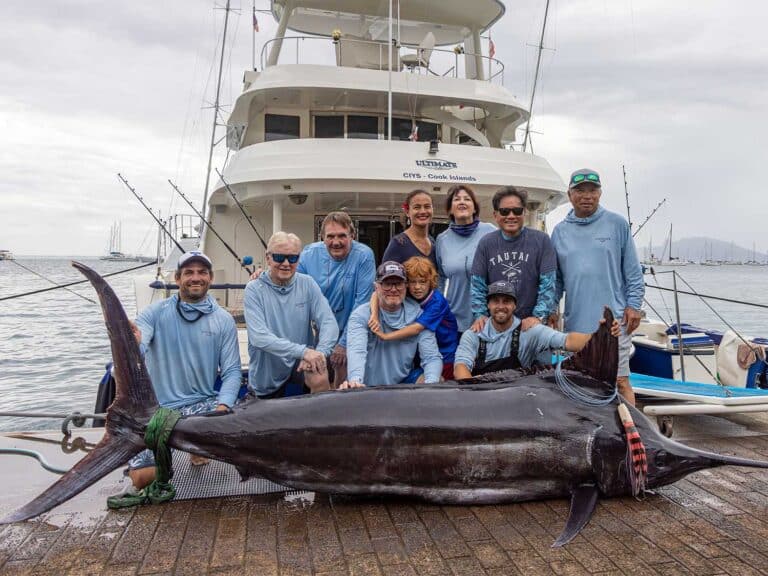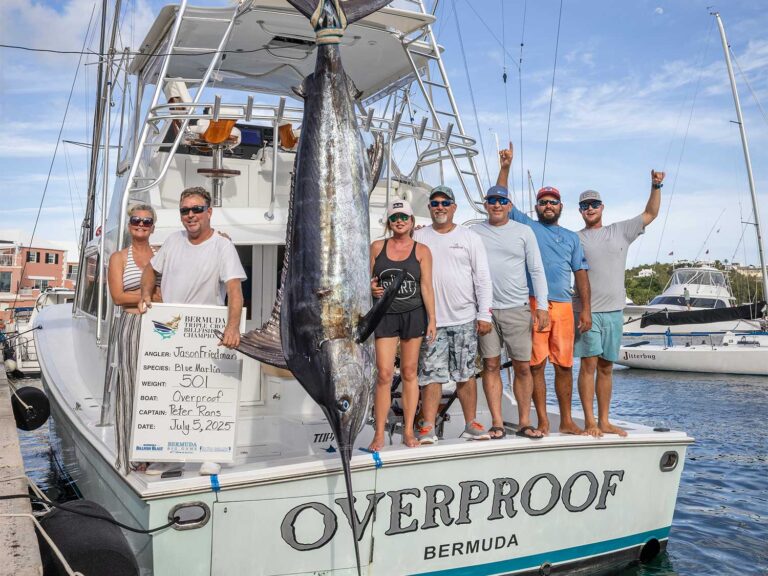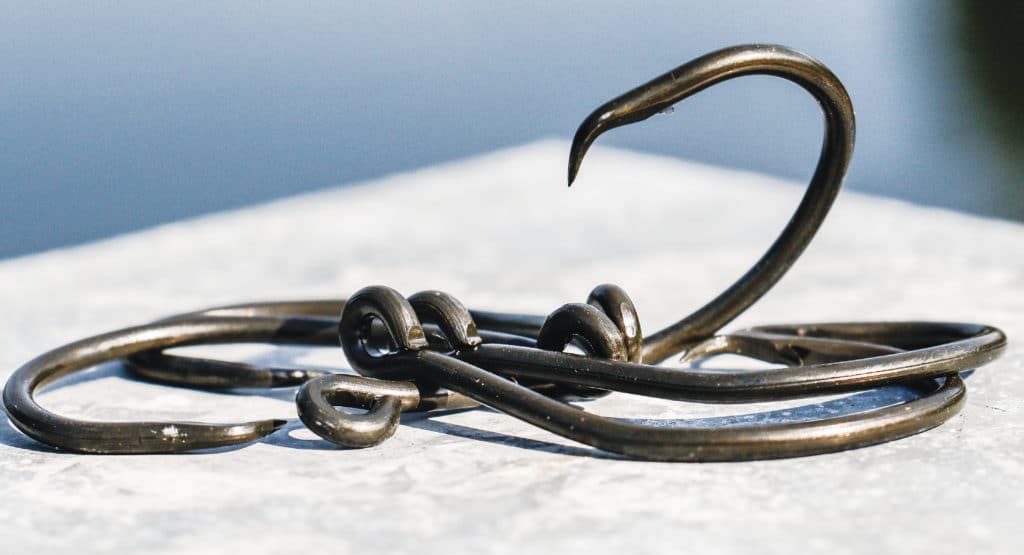
Practice Like You Play
In a famous 2002 interview, now-retired NBA star Allen Iverson responded to criticism that he sometimes skipped practice by saying, “We’re talking about practice. We ain’t talking about the game! We’re talking about practice, man!” That interview came to mind when I tried to rationalize J hook usage outside of billfish tournaments. Why is it that circle hooks are required when fishing in billfish tournaments but not when the majority of anglers are fishing for sailfish, white marlin and blue marlin outside of them? Professional athletes can’t change the shape or size of the ball between games and practices (except maybe Tom Brady), so why is it that we aren’t required to practice like we play when chasing billfish?
Current federal regulations only require circle hooks in tournaments when anglers fish with natural baits, live or dead, or when using combination baits like the Ilander-and-ballyhoo combination. Circle hooks have proven their effectiveness for kite-fishing and dropping back to a charging white marlin, sailfish or blue marlin when trolling. However, J hooks are still used in many fisheries because they are perceived to be more effective at catching meat species. Not only does the research find otherwise, I’ve personally caught countless mahimahi, tuna and wahoo on circle hooks.
The circle-hook regulation was originally implemented in 2007 and finalized in 2008, but many tournaments required anglers to use circle hooks prior to the government mandate, and they are used exclusively in locations with no regulations requiring their use. As the paradigm continues to shift, many individuals in the sport-fishing community would like to see circle hooks required at all times when fishing for billfish using natural or live baits. As we approach the 10-year anniversary of the initial discussions of circle hooks, we owe it to ourselves to look at ways to make the regulations more practical and effective.
Numbers Talk
The most formidable study defining the effectiveness of circle hooks for billfish post-release mortality is the Graves and Horodysky study that found white marlin caught on J hooks had a 65 percent post-release survival rate, as compared to a 100 percent survival rate for those caught on circle hooks. Dr. Eric Prince’s study of the live-bait sailfish fishery in South Florida found similar results and determined circle hooks reduced deep hooking — the factor most commonly associated with post-release mortality — twofold, hooking fish in the mouth 98 percent of the time, compared to less than 50 percent with J hooks. If we look at a hypothetical white marlin season in the mid-Atlantic in which boats fishing with J hooks catch 1,000 fish, 350 of those fish would die, according to the post-release mortality rate garnered by the research. It’s unacceptable as it stands and avoidable with a small regulatory change, so why have we done nothing to curb this trend?
Regional Perspectives
Members of the Mid-Atlantic Fisheries Management Council, including the chairman, recently sent a letter to NOAA requesting the mandatory use of circle hooks at all times when targeting white marlin, using both dead and live bait. “While most tournament crews in the region use circle hooks throughout the season, some boats are still using small J hooks when targeting white marlin before and after the tournament season, with avoidable, lethal consequences,” says Steve Linhard, a member of MAFMC and the HMS Advisory Panel, in his letter to the agency. “When the current tournament rule was instituted, anglers successfully adapted to the use of non‑offset circle hooks, and most now favor their use in nontournament fishing efforts, representing a cultural acceptance of the method.”
The same could be said for circle versus J hook usage for anglers targeting sailfish in South Florida and the Florida Keys. Joan Vernon, a Billfish Foundation board member and longtime proponent of circle hooks, says, “Although the switch to all circle hooks in the Greater Miami Billfish Tournament was controversial, our anglers adapted quickly and are now enjoying the benefits of their conservation-minded choices. The safe and healthy release of sailfish caught with circle hooks for longer than a decade is one reason for the abundance of that species in South Florida waters.”
Further Refinement
The only resentment toward current circle-hook regulations is their required use with combination baits in tournaments, generally when Ilander-style lures are rigged over ballyhoos. Popular in multifish fisheries where anglers are targeting billfish, mahimahi, tuna and wahoo, they are fished more like a traditional lure, with the drag at strike rather than actively dropping back to the fish. As a result, many believe they should not be included in the circle-hook rule or that the language should be modified to reflect actual fishing behavior.
Combination baits can be rigged with a circle hook and a small chugger head on a ballyhoo when pitch-baiting marlin, but this is not where the change is desired. There is a lack of research showing combination baits fished like a lure with the drag at strike causes any more damage or reduction in post-release survival than a lure. One study compares circle hooks to J hooks on combination baits in which anglers dropped baits back to fish for upward of 10 seconds before engaging the drag. This obviously increased the likelihood of deep hooking the fish, but I question the translatability of this finding to how anglers actually fish. It’s not my place to contest their results, but rather to show the differences in practice versus theory to how the regulation currently reads and impacts anglers.
Final Word
It’s time that we take a step back, look at the shift in circle-hook practices over the past decade and realize that regulations need to catch up. I’m betting there will be little pushback from the sport-fishing community, but changes to the regulation to make it more practical can be made, and they should be.
